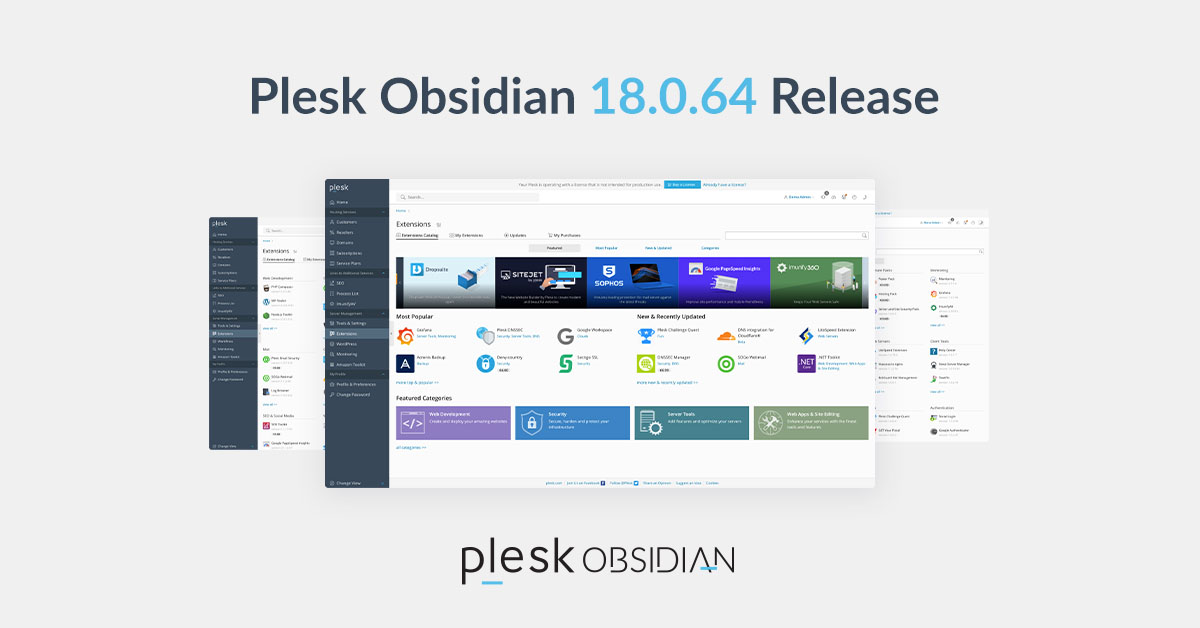New Support Additions
The latest version of MariaDB, version 11.4, has now been integrated as a supported long-term support (LTS) version on Linux systems. This marks a significant update for users who rely on MariaDB for their database management needs, as long-term support versions provide extended maintenance and support, ensuring stability and reliability over an extended period.
In addition to MariaDB’s inclusion, there is also noteworthy support for AlmaLinux 9. AlmaLinux is a Linux distribution that emerged as a popular alternative following the shift in CentOS’s release strategy. This addition is particularly crucial for users who have migrated to AlmaLinux and require stable software support.
Moreover, there is an enhancement in handling websocket traffic through Docker Proxy Rules. Websockets are a communication protocol that provides full-duplex communication channels over a single TCP connection. This update will be beneficial for developers and system administrators who utilize Docker environments, enabling them to efficiently manage and route websocket traffic.
Further Improvements
The Plesk platform has undergone a series of improvements, enhancing its functionality and user experience. Plesk, a popular web hosting control panel, is continually updated to meet the evolving needs of its users. One of the key enhancements in this update is the Plesk Repair feature, which now has the capability to fix MariaDB/MySQL server permissions directly from the user interface. This is a significant improvement that simplifies the process of managing database permissions, making it more accessible to users who may not be as comfortable with command-line operations.
Furthermore, Plesk Obsidian version 18.0.64 has introduced changes to the Disk Space section within the Repair Kit extension. Users can now view disk usage more comprehensively, as both disk and Plesk directories are presented in this section. This enhancement makes it easier for users to understand which areas of their server are consuming disk space.
The update also includes a feature where warnings and alerts are specifically shown for disks containing the directories that are relevant to the user. This targeted alert system helps users focus on the areas that need attention without being overwhelmed by unnecessary notifications.
Additionally, a new message feature has been introduced, offering general recommendations on steps to take if there is insufficient disk space. This proactive approach provides users with guidance on how to manage their disk space more effectively, helping to prevent issues before they arise.
Another improvement is seen in the Track Email Delivery feature, located in the Websites & Domains section under the "Mail" tab. With the new update, if there are any delayed emails in the queue, an orange circle will appear next to the "Mail" tab name, drawing attention to the issue. This visual cue serves as an alert for users to investigate potential problems with email delivery.
For users who may not find this feature necessary, it can be disabled by modifying the panel.ini file. By adding the following lines:
plaintext<br /> [ext-log-browser]<br /> showEmailBadge = false<br />
users can remove the orange circle notification, allowing for a more streamlined user interface tailored to their preferences.
DNSSEC Extension Enhancements
The Plesk DNSSEC extension has also received updates that introduce new command-line interface (CLI) commands. DNSSEC, or Domain Name System Security Extensions, is a suite of specifications for securing certain kinds of information provided by the Domain Name System (DNS) as used on Internet Protocol (IP) networks. These updates give users more control over their DNS zone settings, enhancing the security and management of domain names.
The new CLI commands allow users to sign, unsign, and display the current settings of a DNS zone. This provides users with a flexible and efficient way to manage their DNS security settings directly from the command line.
To sign a domain with the default settings, users can execute the following command:
bash<br /> plesk ext dnssec sign --domain-name example.com<br />
To view the DNSSEC information for a domain, the command is:
bash<br /> plesk ext dnssec info --domain-name example.com<br />
And to remove the DNSSEC signature from a domain:
bash<br /> plesk ext dnssec unsign --domain-name example.com<br />
These commands provide users with a straightforward method to enhance the security of their domain names, ensuring that their DNS information is protected from tampering and unauthorized changes.
Conclusion and Additional Insights
These updates across various platforms and tools reflect a continuous effort to enhance security, usability, and support for users across different technology stacks. The inclusion of MariaDB 11.4 as an LTS version on Linux is particularly significant, providing users with a robust and reliable database solution. The added support for AlmaLinux 9 and websocket traffic management further demonstrates a commitment to adapting to the needs of the community.
The improvements to Plesk, particularly in the areas of disk management and email tracking, make the platform more user-friendly and efficient. By addressing common pain points, these updates help users manage their web hosting environments more effectively.
For users who rely heavily on DNS security, the enhancements to the DNSSEC extension provide valuable tools for managing DNS settings securely. This is crucial in an era where cybersecurity threats are constantly evolving, and protecting DNS information is vital for maintaining the integrity of online services.
Overall, these updates highlight the dynamic nature of technology and the importance of staying informed about the tools and platforms we use. By understanding and utilizing these new features, users can optimize their workflows, improve security, and ensure their systems run smoothly.
For further details on these updates, you can refer to the official website or documentation provided by the respective vendors.
For more Information, Refer to this article.



































